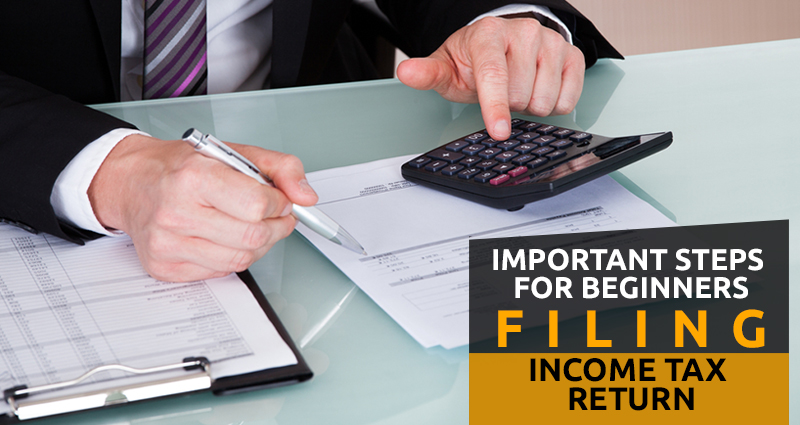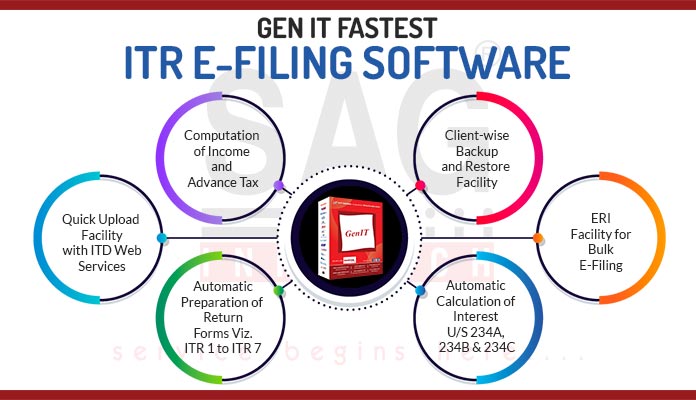Some basic points should always be kept in mind while filing an income tax return for the first time. As it is a tedious task and involves governmental procedures, for the sake of the economy and your own liabilities towards the nation, every citizen or taxpayer must thoroughly review the rules and take note of these helpful points. Let’s review all the key provisions considered in income tax filing.
The current year revised income tax filing due date is 16th September 2025, and the mistakes while filing income tax can be corrected to a true position by the revision later. Losses from business professionals and capital gains can be carried forward only when the return is filed on or before 16th September 2025(Revised).
Note: Under Section 234F, an individual would have to pay a penalty of up to Rs 5,000 for late filing of income tax returns after the due dates if the taxable income limit crosses above INR 5 lakhs. For an assessee with a taxable income of up to Rs 500,000, a reduced penalty of Rs 1000 will be applicable.
One of the most important steps to be taken while filing for income tax is that one must link their Aadhaar Number while filing an income tax return and when one is applying for a new Permanent Account Number. Also, one must note down the consequences if the taxpayer fails to link PAN cards to the Aadhaar numbers.
One should know the time for which the income tax return is filed, i.e. from April 1 to March 31, which is a standard time period followed in almost every financial year.
The tax slab has to do with the income tax computation, as there are various slabs to be careful with different categories of income.
Income Tax Slab Rates for The F.Y. 2024-25 (A.Y. 2025-26) as per the Old Tax Regime
| Income | General Rates |
|---|---|
| Up to Rs. 2,50,000 | NIL |
| Rs. 2,50,000 to Rs. 5,00,000 | 5% |
| Rs. 5,00,000 to Rs. 10,00,000 | 20% |
| Above Rs. 10,00,000 | 30% |
A Health & Education cess of 4% will be levied on the amount of income tax, plus a surcharge. The surcharge is levied at @10% where total income exceeds Rs 50 lakhs up to Rs 1 crore. A surcharge of 15% is applicable when the total income exceeds Rs. 1 crore to Rs. 2 Crore. A surcharge of 25% is applicable when the total income exceeds Rs. 2 crore to Rs. 5 Crore. A surcharge of 37% is applicable when the total income exceeds Rs. 5 crores.
Income Tax Slab Rates for The F.Y. 2024-25 as Per the New Tax Regime
| Income | General Rates |
|---|---|
| Up to Rs. 3,00,000 | NIL |
| Rs. 3,00,000 to Rs. 7,00,000 | 5% |
| Rs. 7,00,000 to Rs. 10,00,000 | 10% |
| Rs. 10,00,000 to Rs. 12,00,000 | 15% |
| Rs. 12,00,000 to Rs. 15,00,000 | 20% |
| Above Rs 15,00,000 | 30% |
The maximum Surcharge Rate of 37% is not applicable while opting for the New Tax Regime.
Some basic identity details like address, contact number, email ID, and bank account details, along with IFSC code and PAN, i.e. permanent account number, which is very much necessary for any tax process in India.
A health and education cess at the rate of 4% of the tax amount is levied.
Various sources of income should be mentioned in the filing of the return, which can determine the tax computation accordingly. Some of the common taxable income categories are:
- Income from salary
- Income from house property
- Income from capital gains
- Income from business and profession
- Income from other sources
Form 16 and 12BA are salary-based tax computation documents that the employer of a person seeks the authority to withhold from your salary.
A consolidated document of TDS, TCS, Advance tax, etc. can be gained from the Income Tax Department’s website, named Form 26AS, in which all the paid taxes are shown.
Also, investment proof is required to be given while claiming a refund or exemption in interest, which marks up to Rs 2,00,000 in the case of self-occupied property. Investments/Contributions made under LIC, PPF, NSC, and ULIPS also come under the exemption scheme under section 80C up to the limit of Rs 150,000. This also includes the contribution of the EPF while employed.
After all this process, there comes a point where the proper income tax return form is to be identified. Generally, there are some forms which are classified in various cases, like:
- a. ITR1 – Applicable to an individual having income from salary/one house property (not a case of brought forward loss) / other sources (not being lottery winnings and income from race horses) and (having income up to Rs.50 lakhs).
- b. ITR2 – Applicable to Individuals/Hindu Undivided Family (HUF) not having income from business or profession
- c. ITR3 -Applicable to an individual/ HUF having income from Business and Profession.
Finally, the verification part is left. Earlier returns were e-verified after submitting the JSON. But now the verification part has to be done before uploading JSON.
Read Also: Free Download Income Tax Return Software
Either we can verify our return online by the process of e-verification through Aadhaar or we can send the signed copy of the ITR to the Centralized Processing Centre (CPC) of the Income Tax Department by any means of the post within the time frame of 30 days failing which the person has to again re-file the return.
Some of the general topics are discussed just above for the sake of hassle-free returns for first-time income tax filers.

